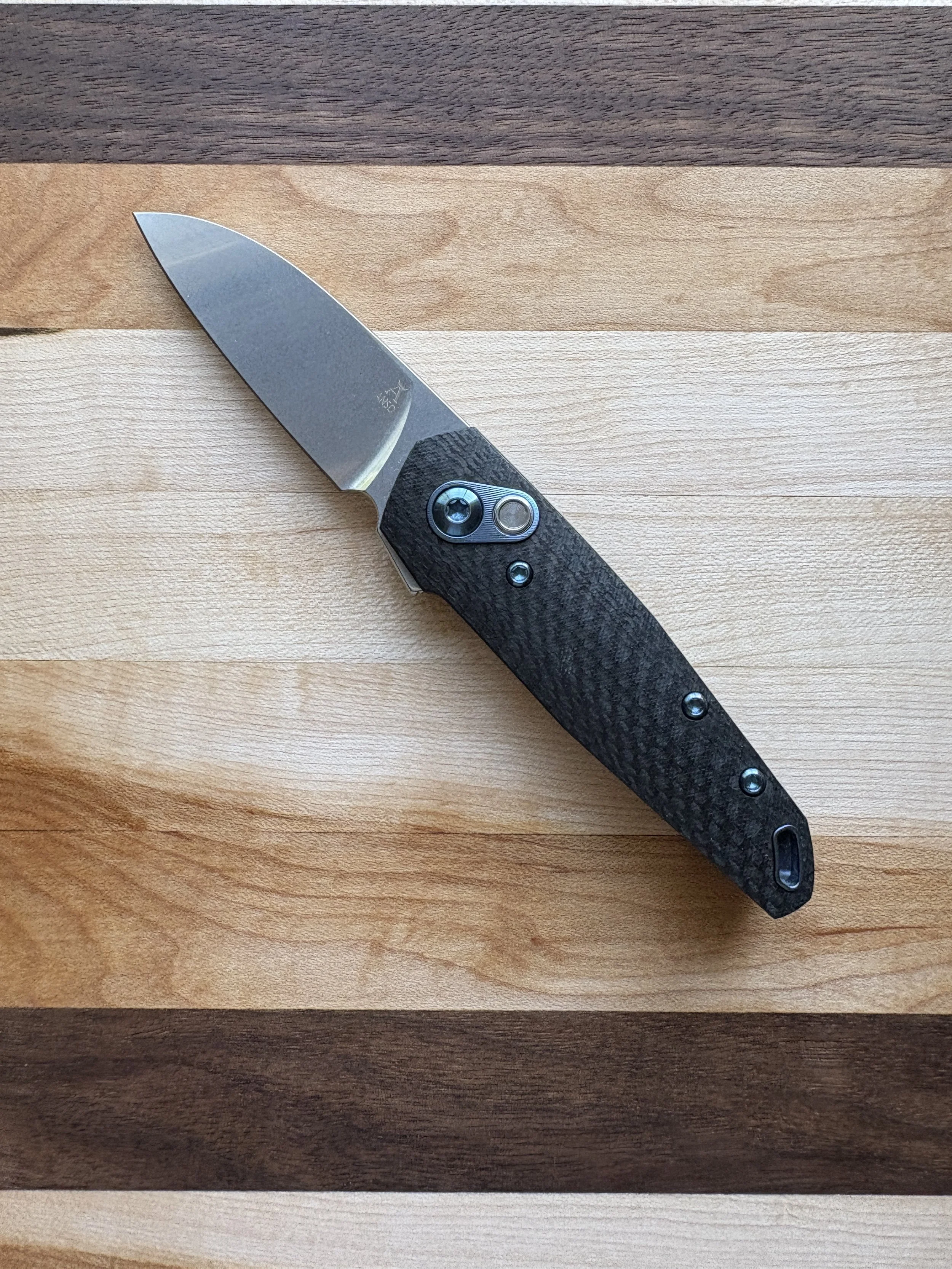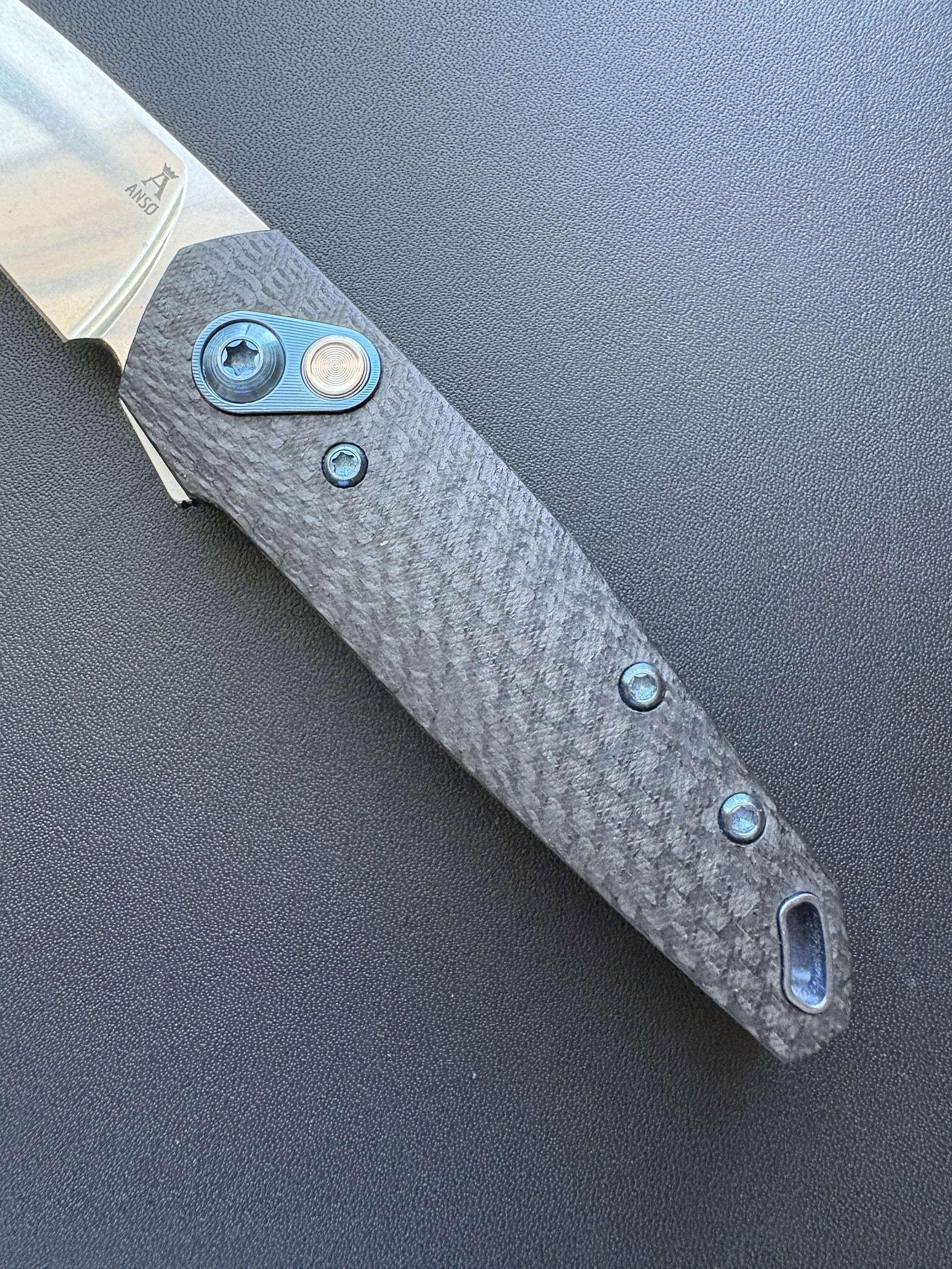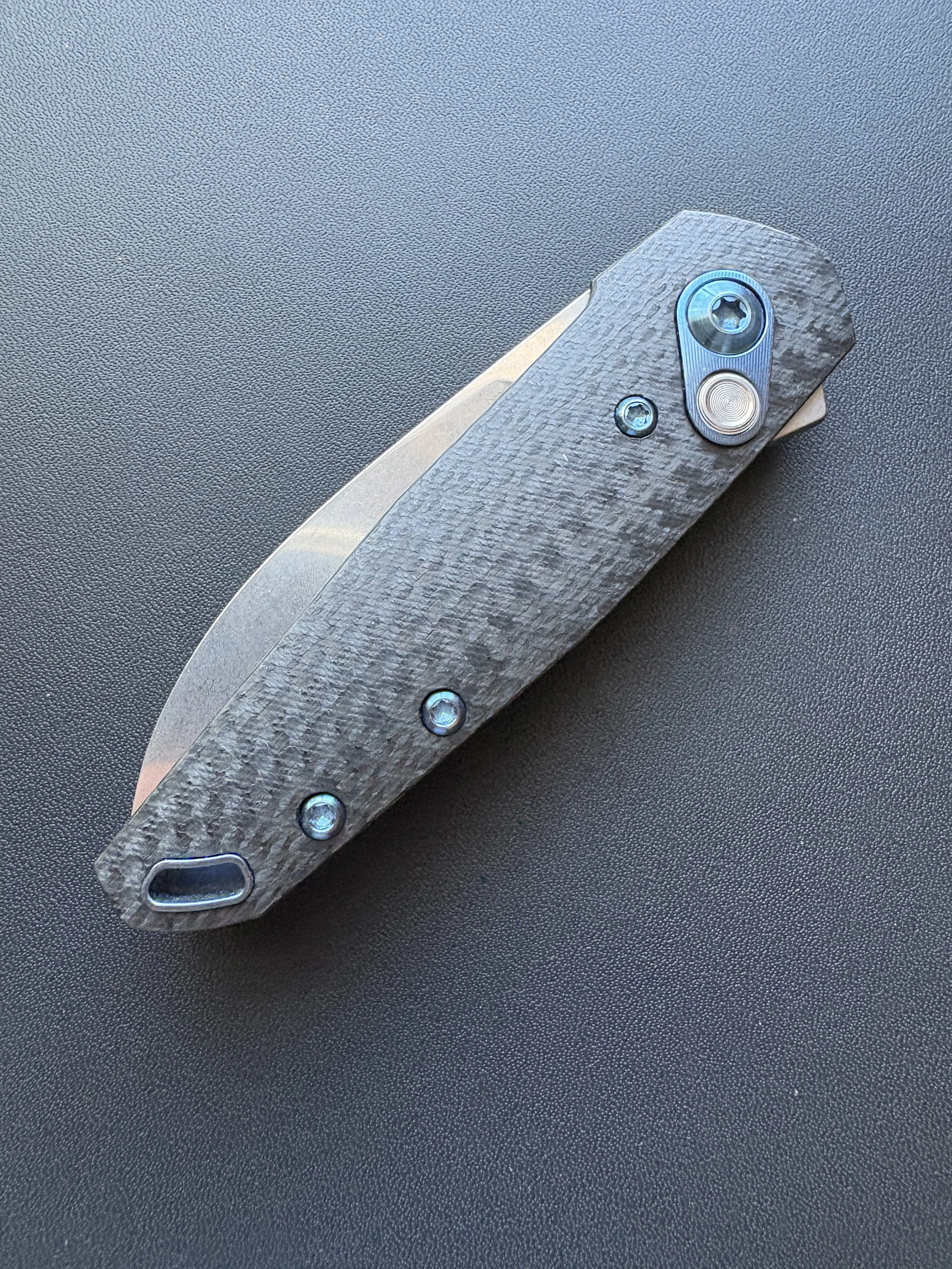Anso of Denmark Aros Review
I remember when I was little and Ken Griffey Jr. made his debut. I was very serious about baseball cards and for years it had been just Topps, Donruss, and Fleer. Then Upper Deck came out with its premium look and feel and they had Ken Griffey Jr.’s rookie card. In 1989 he was decent, for a rookie. He finished 3rd in ROY voting and I thought that was a rip off. Looking back, though, he was only okay. 1990-1992 he was similarly okay. He was getting better but still not what I had hoped he would be when I tore open a pack of 1989 Upper Deck at Xenia’s Old Fashioned Days Parade to find my baseball hero staring back at me. In 1994 he was very good, but not quite as great. It was the same in 1995. Then came one of the best three year stretches in all of baseball history—Ken Griffey Jr’s 1996-1998 seasons. It took 8 years, but he finally delivered on being a generational talent. That picture-perfect swing finally resulted in true success. After that, there was no doubt—the Kid was an all time great.
It was similar when I got into knives (serial hobbyist? Yes). Jens Anso was quite young and he already had a Spyderco collaboration—the weird and unique Rock Lobster. It was big and bulky, not my thing, but I loved its lines (I think I could be persuaded to buy a mini version if Spyderco was so inclined). Similarly, I loved his customs. Their rock pattern texturing, which literally everyone on earth copied, locked the hand in without being overly proscriptive. Then came the Zulu. It was, again, bulbous and weird, but it was an EDC sized knife and from Taichung, Taiwan, birthplace of many great Spydercos. It was nice but probably too weird. Eventually I traded it. There were a few other Anso designs that caught my eye, I even bought a custom that had a weird detent issue and was returned. These knives were the 1990-1995 years from Griffey—good but not mindblowing.
When the Aros came out I was a little gun shy for reasons detailed below, but then I got one and realized that this was the one, the knife that delivers on all of that promise for all those years. Anso has always been a favorite designer, I just never had a knife from him that was a favorite. That has all changed with the Arso. The Aros is Griffey’s 1996-1998 seasons; it is where all that promise pays off.
In rapid succession I got two knives that were so good that I really stopped carrying anything else. One was the Spyderco Sage 6 in S90V. Because of the role I have with AKTI I don’t review member company’s knives and so there will be no S6 review (don’t worry, it would be pretty boring because the knife is perfect). The other, which I can review, is the Aros. This is a beguiling knife, a knife that checks every box possible for me, and a knife that is both innovative and beautiful. Its pricey, starting at $565, but it is the best EDC knife out there, regardless of price. So in a way, its a good value, especially compared to the class of small batch knives out there from the likes of Oz Machine Company and the Grimsmos. In that rarified air of ultra small batch or machine custom knives, there are more options than ever, but none are as laser focused on a superior EDC experience as the Aros. This is a masterpiece of design. Let’s take a tour.
Here is the product page. Here is a video review. This is the first written review. There are bunches of options. Here is my review sample, paid for with my own money and mine to keep.
TLDR: An EDC masterpiece.
Design: 2
Have you ever noticed that certain objects just seem like they are the right size? A standard deck of playing cards is perfect—it is small enough to be portable but also large enough to have cards that convey information. A Zippo seems just the right size to pocket, play with, and use. And, for me, the 83MM Victorinox SAKs are just the right size for a folding knife—not too big, not too small. And the Anso Aros is almost EXACTLY the same size as an 83MM SAK (here pictured with the Bantam). I am not sure why this happens or how it works, but over and over again there are objects that just seem like they are the right size and making things that are similarly proportioned always works well. The original iPod was about the size of a deck of cards. The new and ridiculous Wuben G5 is the same size as a Zippo. In design, focusing on what works is important and here, the size works well.
So the Aros starts out at the right size and gets better from there. The entire knife is coded for tactile-only use. You can open and close this knife without ever looking at it. The raise button lock, screw heads, and lanyard not only look interesting, they serve as signposts for your fingers. When Uziel Gal was designing his submachine gun he put the magazine well in the handle because, as he insisted, even in low light situations or when you can’t look down to reload, “hand finds hand.” This small bit of knowledge of proprioception made his Uzi a premiere weapon for years and the Aros’s raised portions provide similar information, though I doubt you will ever need to deploy it in a firefight.
Then there are the design features endemic to knives. The flipper tab is nicely sized, textured, and shaped. The spine is crowned, the blade stock is thing, the handle is contoured and nicely textured. All in all, the knife’s design is immaculate, what you would expect from one of the best knife designers in the world at the top of their game. This is peak ‘97 Griffey.
Before I move to other things, it is worth mentioning the very clever lanyard hole. Normally these things aren’t worth a mention, unless it is as a negative (see Spyderco Brouwer), but here we have a truly brilliant design that shows why, maybe, there is some benefit to doing more than just drill pressing through an assembled knife handle. The lanyard hole assembly is both the attachment point for the pocket clip AND the lanyard hole. If you think about it as a Y with open part of the Y facing the tip of the knife while looking top down, the stem of the Y is one part of the lanyard, while the left branch is the other. The right branch of the Y is occupied by the place where the clip attaches to the body. This single innovation solves a lot of problems. First, it allows a clip and a lanyard hole on a very small handle. Second, it allows the clip to be placed very strategically, all the way at the end of the knife handle. Third, it ensures that the lanyard exist as the very end of the knife, pointing up when the knife is the pocket making it easy to grab. In all, this is a great design that, to my knowledge, is unique to the Aros.
Fit and Finish: 2
The button lock has been around forever. It has, for the vast majority of its existence, been the purview of elite custom makers that have the time, energy, and ability to fiddle with the precise tolerances needed to make it work. It was elegant and simple to use, but very, very hard to get right. Then in the late 90s Matt Conable at William Henry Knives developed a way to make it work on a production scale, albeit at a very high price point. It wasn’t until the last five to seven years ago that affordable button locks came on the market. Now they are everywhere. There is a Civivi Elementum with a button lock for god’s sake. But they can still be a bit fiddly. Every once in a while I will get a cheaper button lock and think back to how hard they are to make at a production scale.
Fortunately, like with everything else on the Aros, that is not a concern here. The entire knife is flawless. Everything is centered. The edge grind is quite clean. The crowning is even and warmly finished. The detent is perfect. The texture on the handle is clean and well done. Every single part of the knife, including the button lock is without blemish or mistake.
Grip: 2
Normally, small knives tend to be pretty bad in terms of grip. There are exceptions, of course, like the Spyderco Dragonfly 2, but, in general, small knives stink in terms of grip. This is largely because there is a conflict between the typical use for small knives and knives that have grip enhancements. Anso’s approach in this case was to make a small knife very grippy through small machined grooves that are cross hatched across the entire contoured surface of the knife. These, along with the raised mental elements, give the Aros a surprising amount of grip, much more than you typically find in a small knife.
Carry: 2
The Aros is quite light, shaped nicely, and has a very nice clip placed at the very end of the handle. All of this combines to make the Aros a premiere knife in the pocket. It’s so nice and so perfectly sized that it is just ideal in the pocket.
Steel: 2
RWL34 is very similar to CPM154, the powder steel version of 154CM, and that is a good thing as this steel is both relatively rare and truly excellent. It’s probably roughly a peer of the M390 family of steels with a nice balance of corrosion resistance, wear resistance, and toughness. One thing that custom makers talk about with CPM154 is its easy take of a high polish. While the blade isn’t high polish, it is nicely finished with a bit of polish and stonewashing making for a hard wearing finish that still has a bit of bling to it.
Blade Shape: 2
I have often thought that the taxonomy of blade shapes is to knives what musical genres are to modern music fans. Then modifiers and descriptors get so precise and so limiting that at some point you are just describing the thing in front of you. After all, what’s the difference between a modified wharncliffe and a heavy drop point or speed metal and thrash metal? If you are one of the people that thinks there is a meaningful answer to that question your the gunner from law school that raises their hand at the front of the class in contracts class about the mailbox rule—you have a fascination with meaningless details.
Whatever the descriptor, this is a great blade with lots of cutting power and easy sharpenability. Its shape works well the with crowned spine that allows you to get RIGHT up to the tip for incredible precision. It works with the size of the knife to create a very friendly, non-tactical appearance. Name be damned, I like this blade shape a lot.
Grind: 2
Take thin stock, grind it from the highest point down to the edge. That’s it. That is the whole idea. If you do that and get all of the lines clean and even you will do great. If you don’t, be prepared for problems. Thankfully, Anso followed the grind motto and kept everything meticulously even resulting in a blade of impressive cutting ability for a knife that could be more jewelry than tool, but isn’t.
Deployment: 2
I wasn’t expecting this. Button locks typically have a mushy detent, a lot like the detent on some of the lesser sliding bar locks out there. But this knife, oh joy of joys, it fires like a gun. The blade pops out with ease repeatedly and effortlessly over and over again. It is thoughtless, almost telekinetic—want knife open, knife pops open. Its truly impressive when compared to other button locks. The Aros is one of the best and most satisfying to deploy knives I have ever handled, reminding me of that Tim Gaylean custom I fiddled all those years ago or the still supernal Brian Nadeau Micro Evo 2. This is deployment perfection.
Retention: 2
As if it were sculpted from a wind tunnel, the clip slides in and out of the pocket with ease. It is thoughtlessly in and out of the pocket and stays put even in dress slacks or quick dry shorts. The clip stays out of the way when in use and looks positively perfect.
Lock: 2
The praise for the button locks typically here goes deep. Its well made, as I mentioned above, it doesn’t hinder deployment, as I also mentioned above, and yet it still locks up tight as a drum with zero blade play in any direction. There is galling or lock stick, just locked or unlocked. While not ambidextrous, you can operate the blade without having your fingers cross the blade path. Like everything on the Aros, the lock here is perfect. Its even housed in a decorative element with the pivot that visually anchors the knife and guides your fingers. Chef’s KISS!
Other Considerations
Fidget Factor: PEAK
Trust me, this is amazing. Snick, snick, snick.
Fett Effect: Low
With texture on the CF and stonewashing on the blade, it will be very hard to tell if the Aros has been used. The ano on the metal elements on the handle might show some wear, but that will only add to the cool factor of the knife.
Value: High
In a market with $1,000 blades from tons of makers, the Aros stands out as a really good value at just over half that price.
Overall Score: 20 out of 20; PERFECT
I held off for a while on buying the Aros. Part of that was matching up Space Bucks and availability. The other part was I have become very hesitant to pay more than $500 for any knife. Honestly, I have all but given up on the custom market. The knives are so overpriced and overdone. I have long had a rule of no more than $1,000 and recently that number got cut in half. If it were just that the custom market is a little overheated right now, that would be one thing, but the availability and price point for modern knives is pretty incredible. A $200 TRM N2 or a $300 Spyderco S6 in S90V are pretty insane. I am really having a hard time thinking of reasons to spend more money than what the S6 costs.
The Aros provided me with such reasons. While this knife is far from minimal, I have come to appreciate each and every detail. The slightly proud screw heads and the raised edge of the lanyard hole help with mentally indexing where the knife is in your hand without looking. The half width, asymmetric lanyard hole is a brilliant way to make a clip and a lanyard work on a small knife. The spine is crowned, the flipper tab is perfectly textured. Over and over again, the knife is filled with insightful and resplendent details.
Competition
I have handle quite a few knives in this space from the Grimsmo to the Roosevelt. Frankly, they all seem a little overpriced. These aren’t full handmade customs like my Sawby Swift. These are machine made knives that might have individual surface treatments or machined elements. They are very good, made to a very high standard, but not the same standard as the Swift. And while the market supports them at $1,000 that seems a bit much to me. Exhibiting the same quality and an unimpeachable design heritage, the Aros seems like the best choice for knives of this class. The only knife I pause over when thinking about it, is the Millit Torrent. That’s a sweet knife too, but for me the Aros as a design language that is more sophisticated than the Torrent. The Torrent is an excellent knife design-wise, but the Aros is something new, something better than just a very refined framelock. And for that reason, though it is awfully close, I would take the Aros over the Torrent, which is an also an excellent value.
Amazon Links









